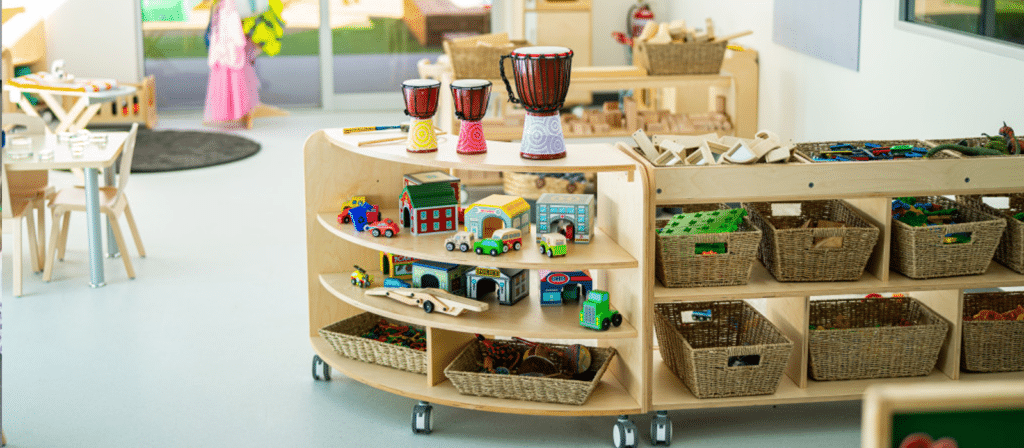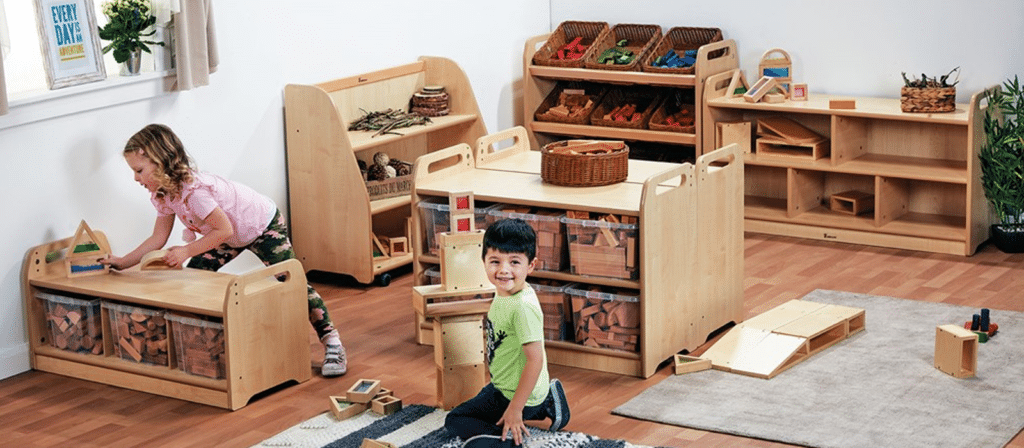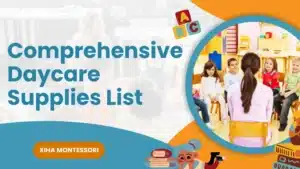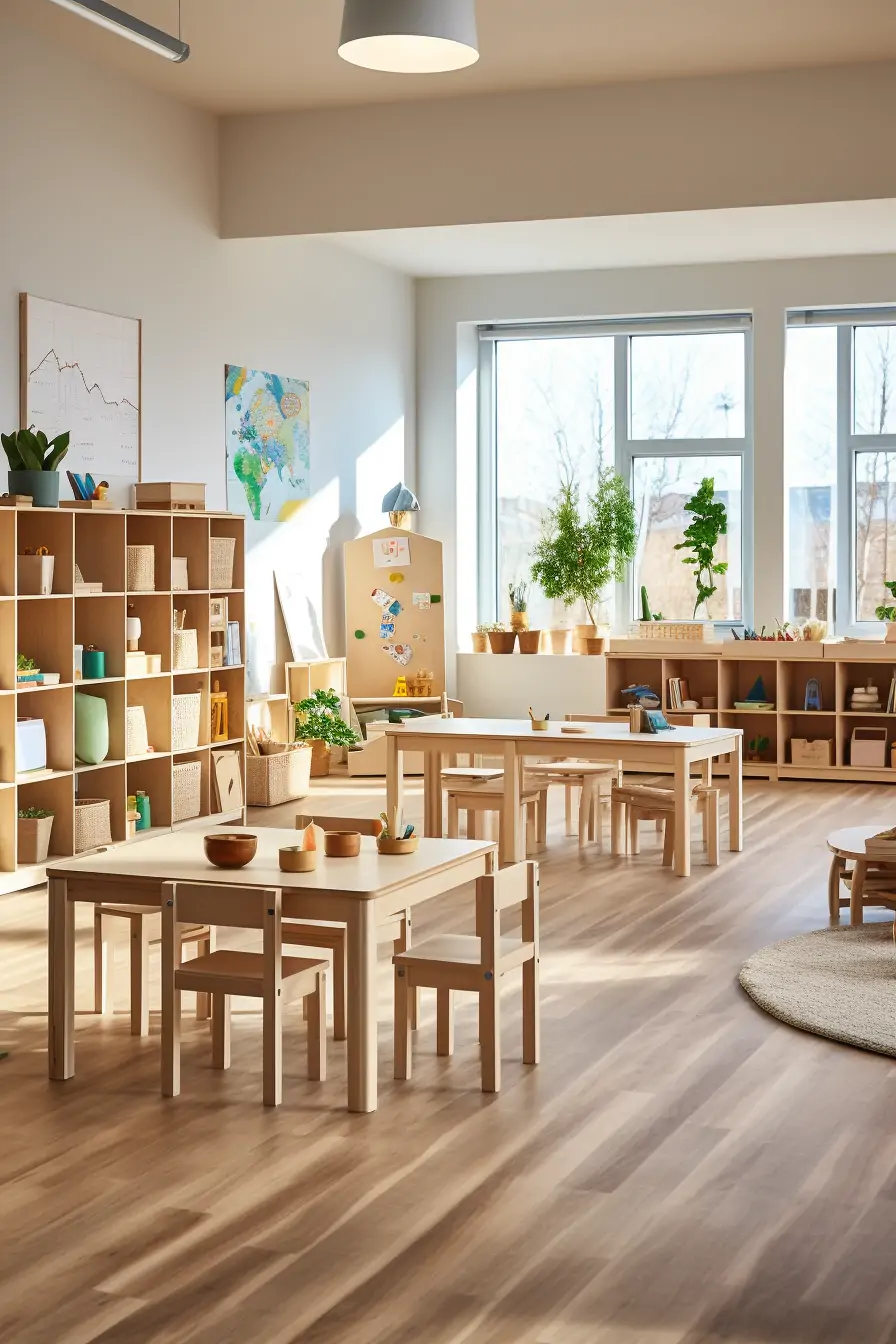Ever wondered how to keep a Montessori classroom organized and clutter-free while accommodating the unique learning materials? Dive into the world of efficient furniture storage solutions that perfectly align with the Montessori philosophy, ensuring a harmonious and functional environment for both educators and young learners.
One key aspect of a well-designed Montessori classroom is furniture storage. With limited space and a wide array of materials, finding the right storage solutions is crucial.
One important aspect of creating a conducive learning environment is having proper storage solutions for the various materials and tools used in Montessori education. In this blog post, I will discuss the importance of furniture storage and share some creative solutions that can help Montessori teachers keep their classrooms organized and clutter-free.
Why is furniture storage important in Montessori classrooms?
Montessori classrooms are known for their emphasis on independence and hands-on learning. In order to facilitate this, the classrooms are filled with various learning materials, from sensorial materials to practical life activities. However, without proper storage, these materials can quickly become disorganized and cluttered, hindering the learning experience for both students and teachers.
Proper furniture storage solutions not only maximize space but also ensure that materials are easily accessible and visually appealing. A well-organized Montessori classroom promotes a sense of order and calmness, allowing students to focus on their activities and explore their interests.
The Benefits of Well-Designed Furniture Storage
Proper furniture storage in Montessori classrooms offers several benefits. Firstly, it allows for easy access to materials, enabling students to independently choose and return items without assistance. This fosters a sense of responsibility and autonomy. Secondly, it helps maintain a clean and tidy environment, which is essential for concentration and focus. Lastly, efficient storage systems save valuable time for teachers, reducing the time spent searching for materials and allowing more time for instruction and interaction with students.

What are some furniture storage solutions for Montessori classrooms?
- Open Shelves with Baskets: Open shelves are a staple in Montessori classrooms, allowing easy access to materials. By using baskets or bins, you can categorize and store materials based on their curriculum area or theme. This not only keeps everything organized but also makes it visually appealing for students.
- Wall-Mounted Cabinets: Utilizing wall space is a great way to maximize storage in a Montessori classroom. Wall-mounted cabinets with adjustable shelves provide additional storage while keeping the floor space clear. These cabinets can be used to store books, art supplies, and other materials that are not frequently used.
- Mobile Storage Units: Flexibility is key in a Montessori classroom, and mobile storage units offer just that. With wheels for easy maneuverability, these units can be moved around the classroom to create different learning stations or to accommodate changing needs. They can be used to store materials that are used frequently or as a temporary storage solution during transitions.
- Under-Bench Storage: Many Montessori classrooms have benches or low tables for group activities. Utilizing the space underneath these benches for storage is a clever way to save space. You can install drawers or add baskets to store materials that are used during group work or circle time.
- Hanging Wall Pockets: Wall pockets are a great solution for storing smaller materials such as art supplies, math manipulatives, or language cards. By utilizing vertical space, you can keep materials visible and easily accessible. Color-coded pockets can be used to further categorize materials based on their curriculum area.
- Built-in Shelving: If you have the opportunity to customize your Montessori classroom, built-in shelving is a fantastic option. Customized shelving units can be designed to fit the specific needs of your materials, ensuring that everything has its designated place. This creates a visually pleasing and organized environment.
These are just a few examples of furniture storage solutions that can greatly enhance a Montessori classroom. The key is to find a balance between functionality and aesthetics, creating a space that is both practical and inviting for students.

How can furniture storage enhance the Montessori learning environment?
- Promotes Order and Organization
A well-organized classroom creates a calm and inviting atmosphere for both students and teachers. When materials are properly stored and easily accessible, students can quickly find what they need and return items to their designated places. This promotes a sense of order and helps students develop organizational skills. - Encourages Independence
Montessori education places a strong emphasis on fostering independence in students. Having furniture storage solutions that enable students to independently access and return materials supports this philosophy. When children can choose materials and engage in self-directed learning, they develop confidence, problem-solving skills, and a love for learning. - Facilitates Concentration and Focus
A clutter-free and well-organized learning environment helps students maintain focus and concentration. When materials are neatly stored away, distractions are minimized, allowing students to fully engage with the task at hand. Furniture storage solutions play a vital role in creating an environment conducive to deep learning and exploration.
How do these furniture storage solutions benefit Montessori educators and students?
By implementing these furniture storage solutions, Montessori educators can experience several benefits. Firstly, the organization of materials saves time and reduces stress. Educators can easily locate and retrieve materials, allowing for a smooth flow of activities throughout the day.
Secondly, an organized and visually appealing classroom environment promotes independence and self-discipline among students. When materials are neatly displayed and easily accessible, students are more likely to engage in independent exploration and take ownership of their learning.
Furthermore, an organized Montessori classroom creates a sense of order and calmness, which is essential for concentration and focus. When materials are stored in a systematic manner, distractions are minimized, and students can fully immerse themselves in their chosen activities.

Conclusion
In conclusion, furniture storage solutions are crucial for creating an organized and efficient Montessori classroom. Open shelving units, cubbies, low-level storage, and mobile storage solutions are all effective ways to keep materials easily accessible while maintaining a clutter-free environment. By investing in well-designed furniture storage, Montessori educators can enhance the learning experience for their students and promote independence, concentration, and orderliness in the classroom.










